
Fundamentals
The Hair Follicle Biology represents the foundational wisdom of our hair, a deep understanding that transcends mere surface appearance to reach the very source of each strand. It is the intricate, living wellspring nestled within the skin, a microscopic organ responsible for the birth, growth, and renewal of every hair fiber gracing our heads and bodies. To comprehend its mechanisms is to unlock the secrets of vitality, particularly for those of us with textured hair, whose ancestral knowledge has long held reverence for this elemental structure. The true significance of the hair follicle extends beyond its biological designation; it serves as a silent chronicler of lineage, a testament to the enduring power of inherited traits, and a conduit for the expression of self through the myriad forms our hair can take.
From the simplest perspective, the hair follicle is a tiny, tube-like pore surrounding the hair’s root and shaft. Residing within the skin’s dermal layer, it orchestrates the entire hair growth process. This remarkable entity, composed of numerous cell types, operates in a delicate dance with hormones, neuropeptides, and immune cells, regulating the pace and quality of hair production.
Without this subterranean architect, the visible beauty and protective qualities of our hair would simply not exist. Understanding this fundamental biological unit forms the initial step in a deeper appreciation of our hair’s journey, especially as we consider the unique characteristics and heritage of textured hair.
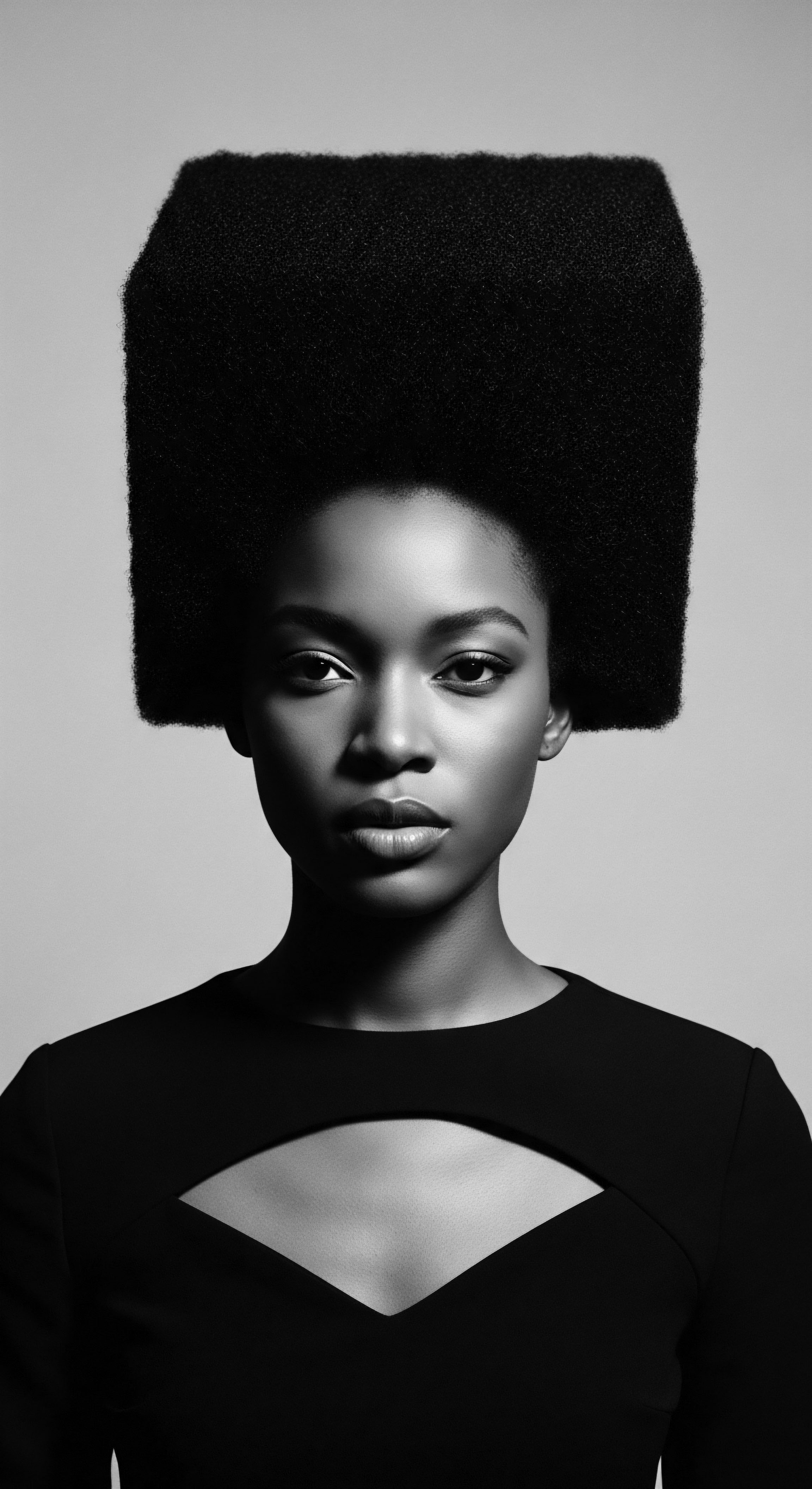
The Anatomy of the Hair’s Beginning
Within the dermal layer, the hair follicle presents a complex, yet beautifully organized architecture. At its very base lies the Dermal Papilla, a small, cone-shaped structure composed of connective tissue and an array of capillaries providing essential nourishment. This papilla is in constant communication with the Hair Matrix, a cluster of rapidly dividing cells positioned above it. These matrix cells are the true artisans of hair, proliferating and differentiating to form the various layers of the growing hair shaft.
Surrounding this active core are the Inner and Outer Root Sheaths. The inner root sheath, intimately associated with the developing hair, provides a channel for the growing strand. It is derived from the basal cells of the hair matrix and consists of three layers ❉ Henle’s layer, Huxley’s layer, and an internal cuticle.
The outer root sheath, an extension of the epidermis, encases the hair root, offering support and containing vital stem cells within its Bulge region. These stem cells are a reservoir of regenerative potential, capable of supplying new cells to the entire follicle and aiding in skin repair following injury.
The hair follicle, a microscopic organ nestled within the skin, serves as the fundamental wellspring for every strand of hair, deeply connecting our visible crown to a hidden world of cellular activity and ancestral blueprint.
Associated with the hair follicle are other significant structures. The Sebaceous Glands, typically attached near the top of the follicle, produce sebum, a natural oil that lubricates the hair and scalp, offering a protective barrier. The tiny Arrector Pili Muscle, when stimulated by cold or emotion, causes the hair to stand erect, resulting in what we commonly refer to as “goosebumps.” Nerve endings surrounding the follicle provide sensory input, allowing us to feel movement or touch upon our hair. This intricate network works in concert, establishing the conditions for healthy hair growth and maintenance.
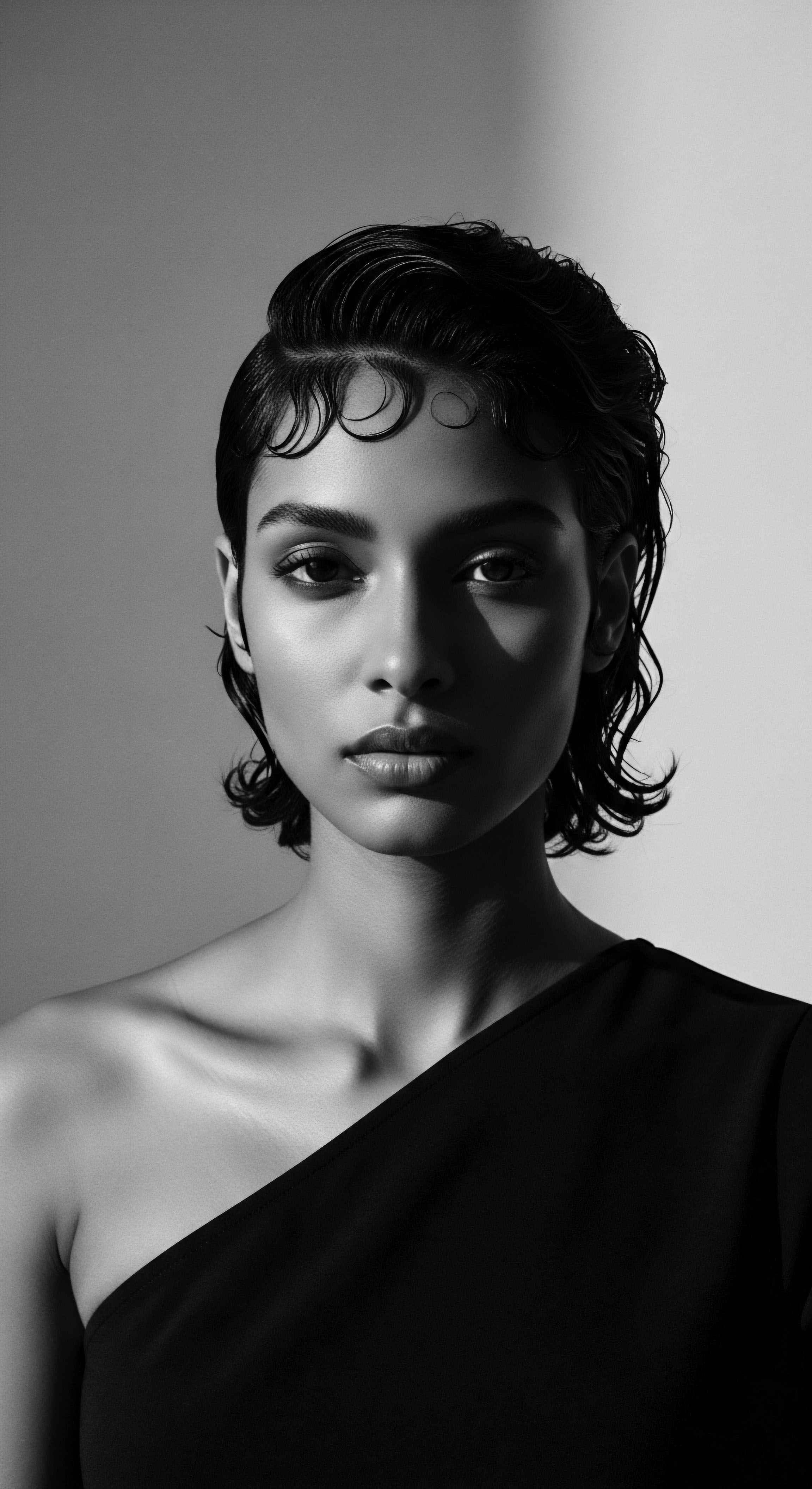
The Unseen Rhythm ❉ Hair Growth Cycles
Hair growth is not a continuous, uninterrupted process. Instead, each individual hair follicle cycles through distinct phases, a rhythmic progression that governs its life. This cyclical nature ensures a constant renewal, with some hairs actively growing while others rest or prepare for shedding. Understanding these phases offers insight into the hair’s inherent resilience and the natural patterns of its renewal.
- Anagen ❉ This is the active growth phase, the longest period in the hair’s journey. During anagen, the hair matrix cells divide rapidly, producing new hair fiber that pushes upward through the follicle. For scalp hair, this phase can extend from two to eight years, accounting for the length many individuals can achieve. The anagen phase can be further segmented into sub-phases, reflecting the intense proliferative activity.
- Catagen ❉ A transitional phase, catagen marks the end of active growth. It is a brief period, typically lasting only a few weeks, during which the hair follicle shrinks, detaches from the dermal papilla, and hair growth slows. This phase is characterized by a controlled regression of the follicle, as cells undergo programmed processes.
- Telogen ❉ Following catagen, the hair follicle enters the telogen, or resting, phase. During this period, which lasts approximately two to four months, the hair follicle is dormant, and no new hair growth occurs. The hair shaft remains in the follicle, but it is no longer actively growing.
- Exogen ❉ This final phase, sometimes considered an extension of telogen, is when the old hair sheds, making way for a new hair to begin its anagen phase. This natural shedding, typically 50 to 100 hairs per day, is a normal part of the hair’s renewal process.
The asynchronous nature of these cycles across the scalp means that not all hairs are in the same phase at once. This ensures that a relatively stable density of hair is maintained. The duration of these phases can be influenced by various factors, including age, nutritional status, overall health, and genetics.
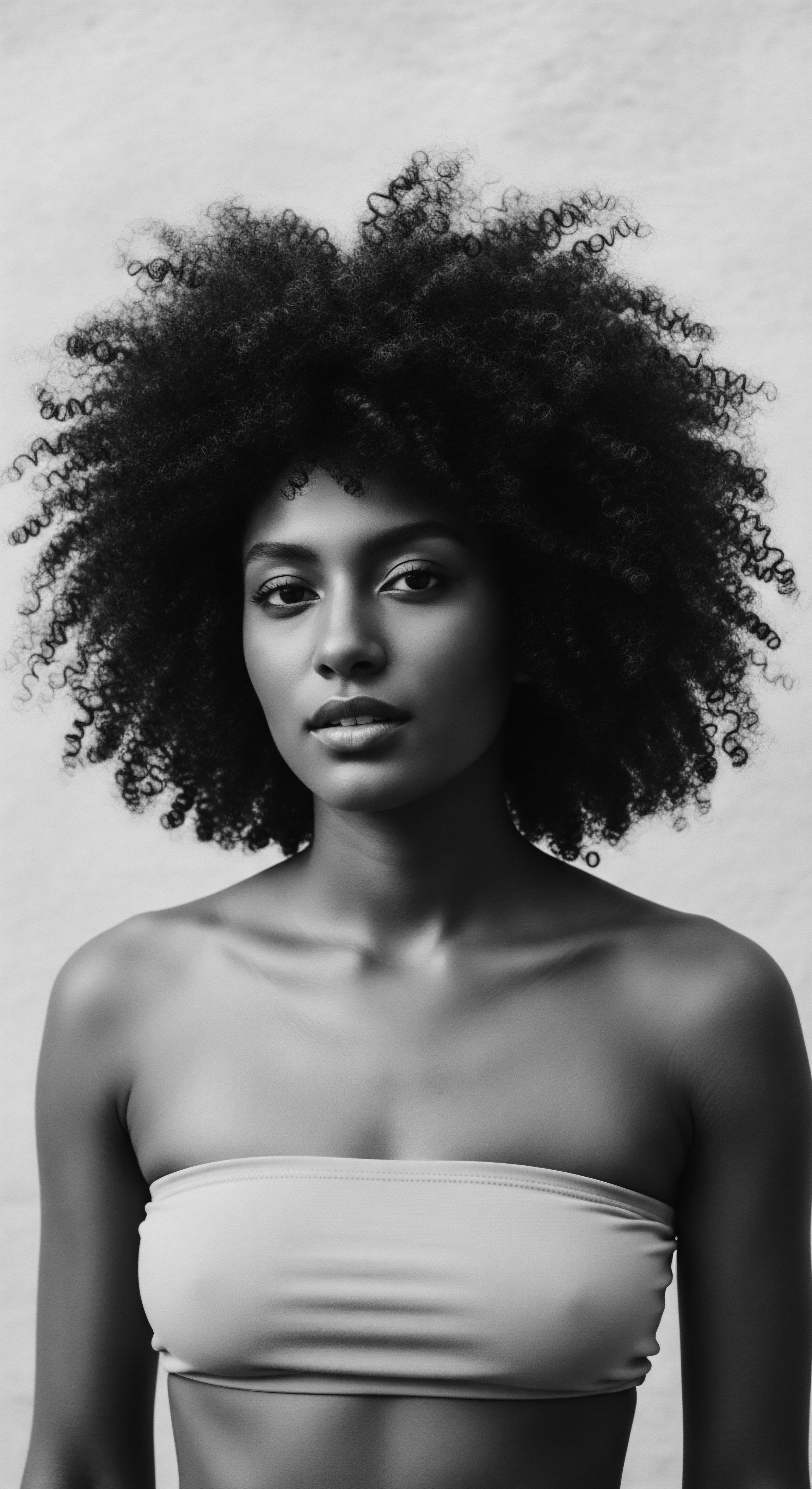
The Root of Textured Beauty ❉ Early Insights
From the earliest understanding, the hair follicle has been recognized as the architect of hair form. For textured hair, this elemental biological truth carries particular weight. The shape of the hair follicle itself is a primary determinant of curl pattern.
Straight hair tends to emerge from round follicles, while wavy hair originates from oval-shaped follicles. The more pronounced the curl, the more elliptical or even flattened the hair follicle’s cross-section becomes, often exhibiting a curved or asymmetrical S-shape.
This follicular morphology, inherited through ancestral lineages, dictates the path the hair strand takes as it grows, influencing the distribution of keratin and the formation of disulfide bonds within the hair fiber. These internal structures then contribute to the hair’s unique coiling, kinking, or waving patterns. Recognizing this inherent biological difference is not merely a scientific observation; it is a validation of the distinct beauty and needs of textured hair, a beauty that has been celebrated and understood within many cultural traditions long before modern scientific inquiry.
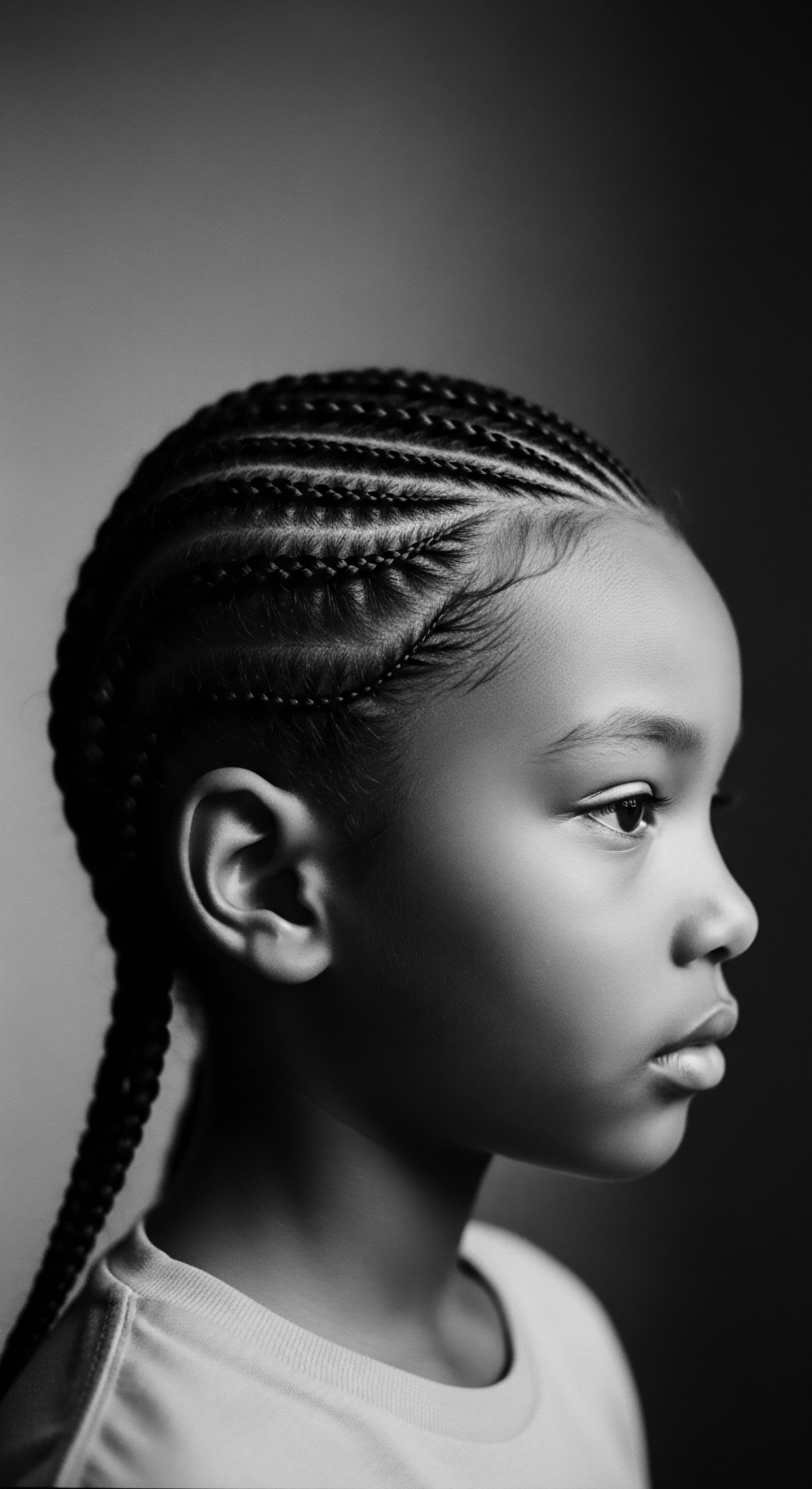
Intermediate
Moving beyond the foundational understanding, the intermediate exploration of Hair Follicle Biology delves into the intricate interplay of forces that shape our strands, with a particular focus on how these mechanisms manifest within textured hair. This deeper appreciation recognizes that the hair follicle is not a static entity, but a dynamic system responsive to both the inherited blueprint and the lived environment. The distinctions in follicular shape and the resulting hair morphology are not merely academic curiosities; they inform the very essence of textured hair care and the ancestral wisdom that has guided its preservation across generations.
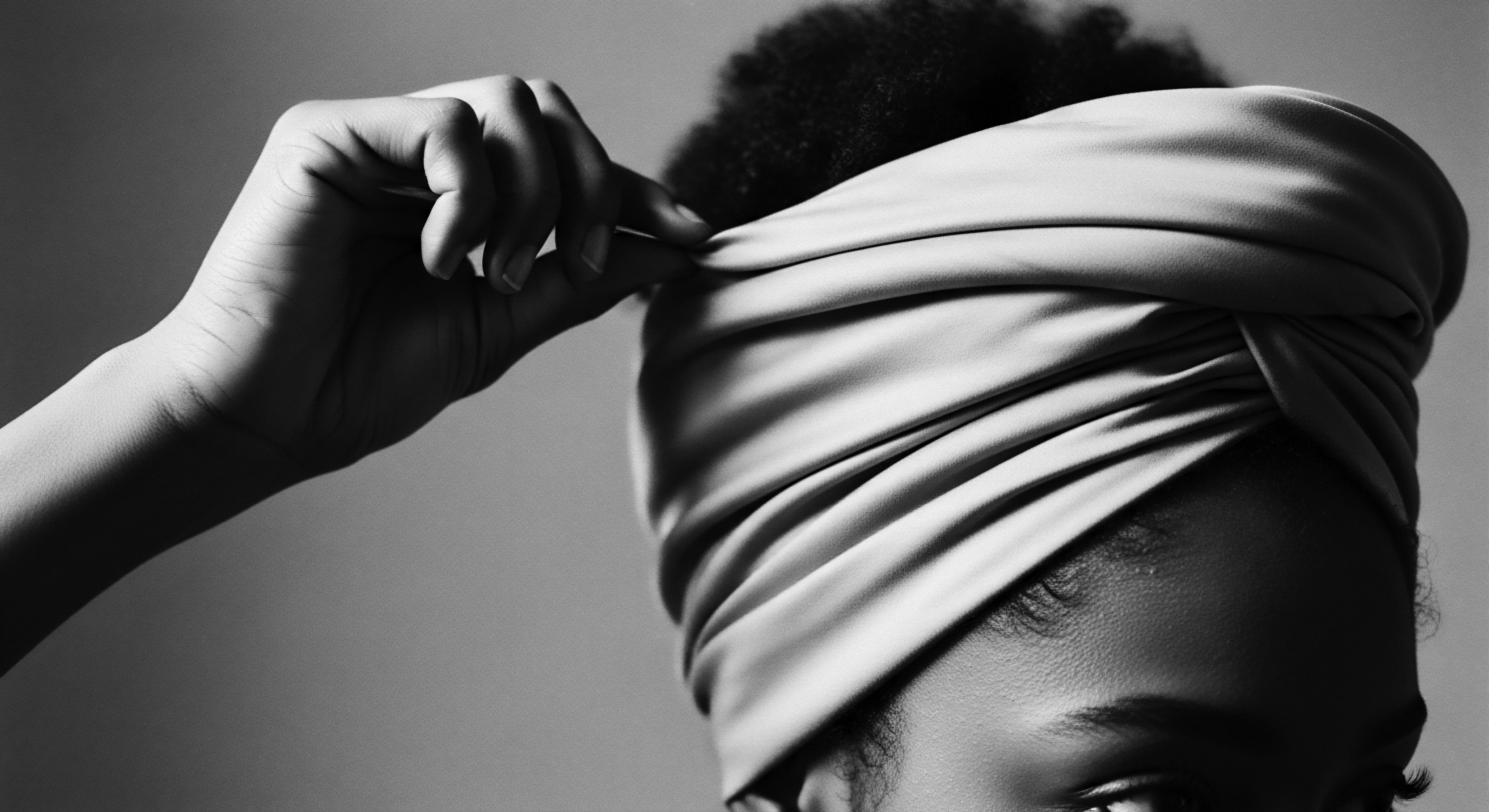
The Genetic Blueprint and Follicular Expression
The journey of each hair strand begins with a profound inherited legacy, a genetic blueprint passed down through family lines. The specific shape of the hair follicle, the angle at which it emerges from the scalp, and the way keratin proteins align within the hair fiber are all influenced by our genetic makeup. For textured hair, this genetic inheritance often results in an elliptical or even ribbon-like follicle shape, which causes the hair to grow in a spiral or coiled fashion. This inherent curvature dictates the hair’s natural tendency to bend and twist, forming the beautiful patterns we observe.
While genetics play a significant role, the expression of these traits can be complex. Hair curl is considered an “additive” trait, meaning the degree of curl is influenced by multiple gene variants inherited from both parents. This explains why even within families, siblings can exhibit a range of curl patterns, from loose waves to tight coils.
The gene Trichohyalin (TCHH), for example, is recognized for its contribution to shaping the hair shaft and determining texture by influencing the cross-linking of keratin filaments. Such genetic markers offer a scientific lens through which to appreciate the diversity of textured hair, affirming that its unique characteristics are deeply rooted in biological inheritance.
The inherited architecture of the hair follicle, particularly its elliptical form, is the biological wellspring of textured hair’s distinctive curl, a testament to the ancestral patterns etched within our very cells.
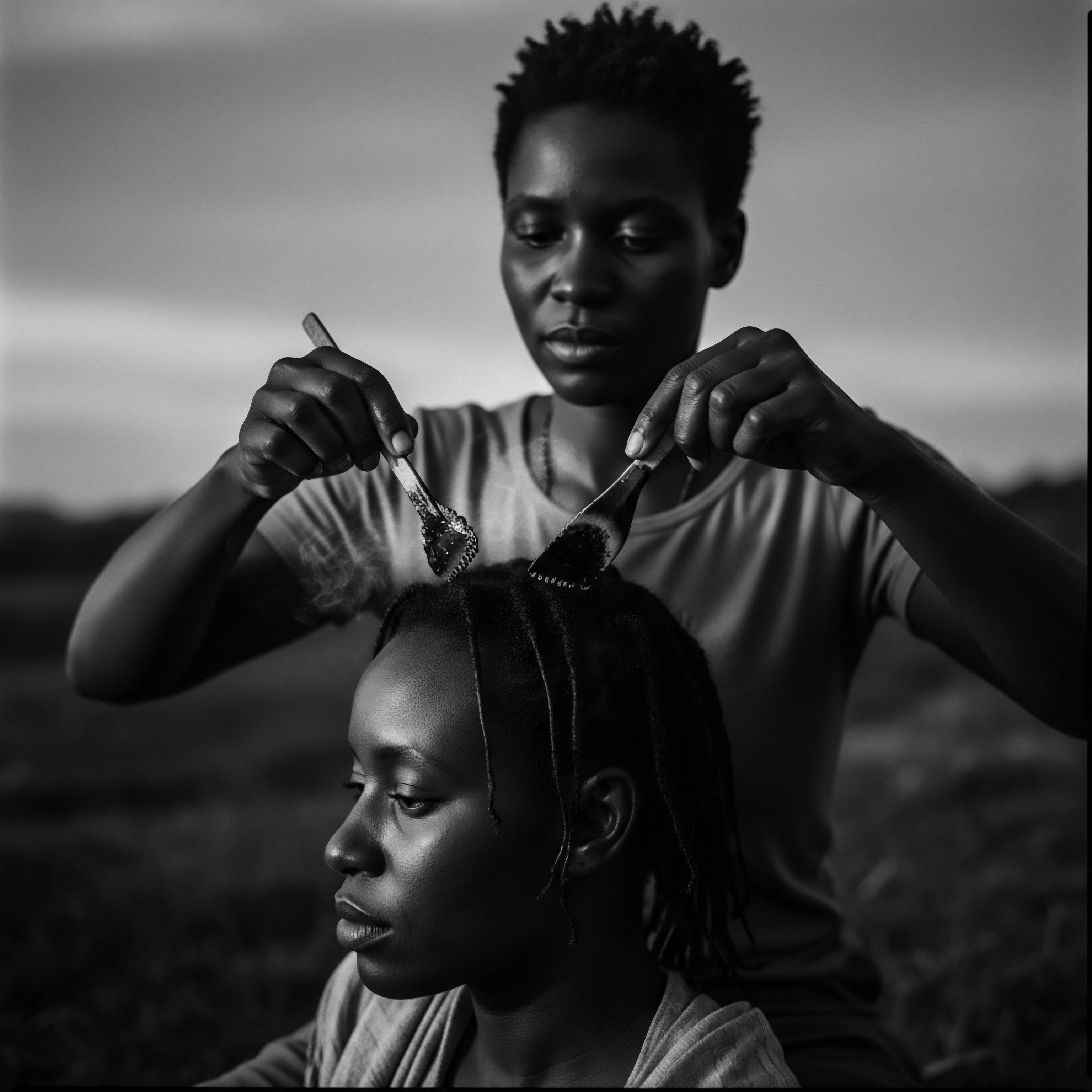
Follicular Morphology and the Dynamics of Curl
The distinct morphology of the hair follicle in textured hair has profound implications for its physical properties and care requirements. Unlike the more cylindrical follicles that produce straight hair, the curved and often asymmetrical follicles of textured hair cause the hair shaft to grow with inherent twists and turns. This structural reality contributes to several key characteristics ❉
- Cuticle Lift ❉ The scales of the hair’s outermost layer, the cuticle, tend to be more lifted along the curves and bends of textured hair strands. This increased lift can make textured hair more susceptible to moisture loss and tangling.
- Reduced Sebum Distribution ❉ The natural oils produced by the sebaceous glands at the follicle base struggle to travel down the highly coiled and curved hair shaft. This results in the ends of textured hair often being drier than the scalp, necessitating external moisturizing efforts.
- Tensile Strength and Breakage ❉ While not inherently weaker, textured hair can be more vulnerable to mechanical stress and breakage due to its structural configuration. The points where the hair shaft bends are areas of increased fragility. This vulnerability underscores the importance of gentle handling and protective styling.
These biological realities, while presenting unique care considerations, also underscore the resilience of textured hair. Generations of ancestral practices have developed ingenious methods to address these very characteristics, often through deep conditioning, protective styles, and the application of nourishing plant-based ingredients.
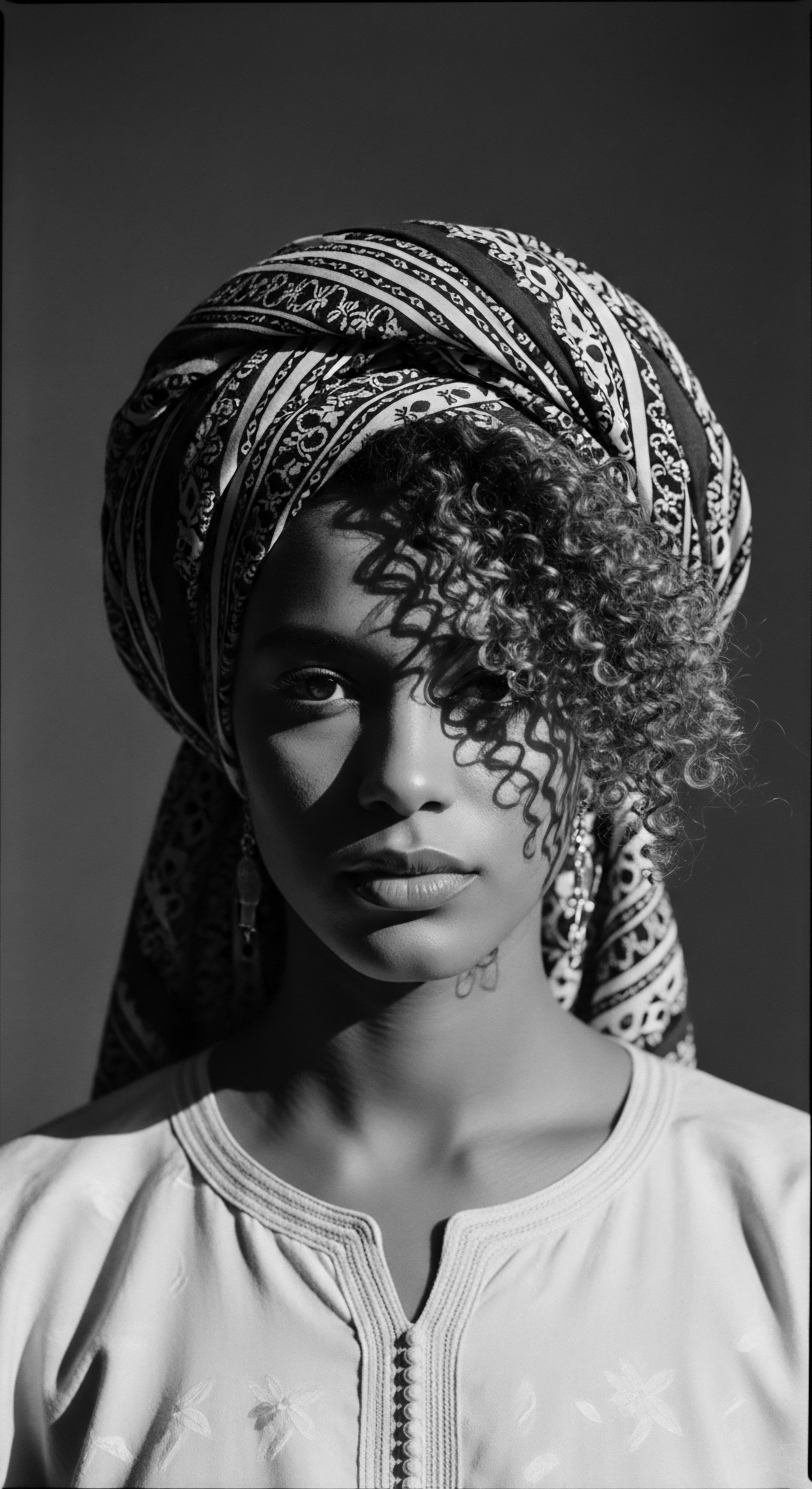
The Scalp Ecosystem and Ancestral Wisdom
The hair follicle does not exist in isolation; it is deeply embedded within the scalp, a living ecosystem that plays a vital role in hair health. The health of the scalp directly influences the function of the hair follicles. Factors such as proper cleansing, balanced moisture, and adequate circulation are essential for supporting robust hair growth.
Ancestral wisdom, passed down through oral traditions and community practices, often recognized the interconnectedness of scalp and hair vitality. Traditional African hair care, for example, frequently incorporated natural ingredients known for their cleansing, soothing, and nourishing properties. These practices, though perhaps not articulated in modern scientific terms, implicitly supported the optimal functioning of the hair follicle by maintaining a healthy scalp environment.
Consider the historical application of natural clays, such as Rhassoul Clay from Morocco. This ancient practice served to cleanse the scalp and hair without stripping away natural oils, allowing the scalp’s delicate balance to remain undisturbed. Similarly, the use of various plant-based oils and butters, like shea butter, coconut oil, and marula oil, provided essential moisture and protection, creating an environment where follicles could thrive. These historical approaches reveal a profound, intuitive understanding of Hair Follicle Biology, long before microscopes revealed its hidden wonders.
The communal aspect of traditional hair care also speaks to this intermediate level of understanding. Hair styling and care rituals were often shared experiences, fostering intergenerational knowledge transfer and collective well-being. This collective care contributed to the health of individual follicles by promoting consistent, informed practices rooted in centuries of observation and adaptation.
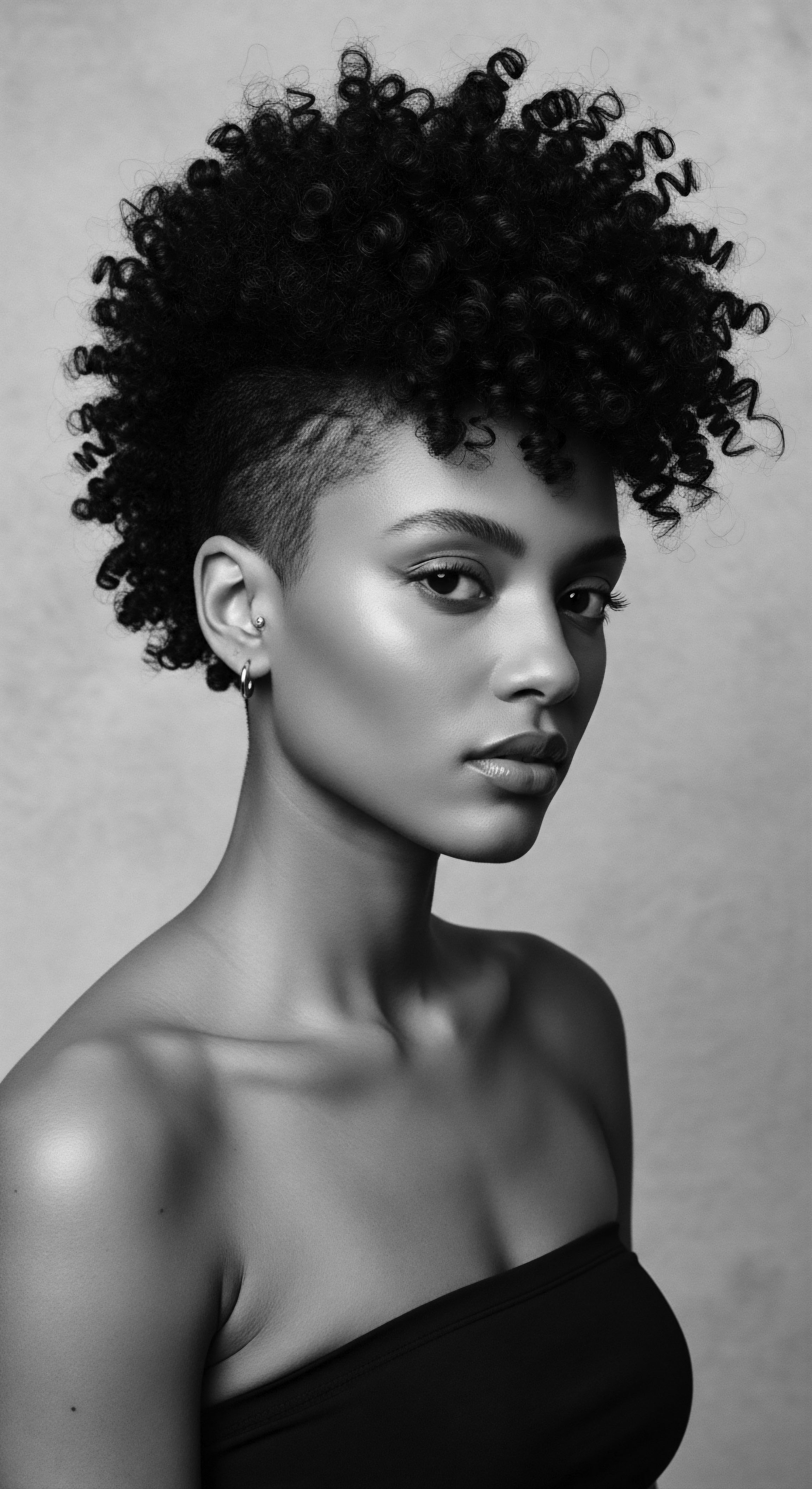
Academic
The academic elucidation of Hair Follicle Biology transcends a mere description of its parts and processes; it involves a rigorous examination of its cellular and molecular underpinnings, its developmental pathways, and the complex regulatory networks that govern its function. This advanced understanding reveals the hair follicle as a marvel of biological engineering, a self-renewing mini-organ with profound implications for human health, identity, and cultural expression. For textured hair, this academic lens permits a deeper investigation into the specific biological distinctions that shape its unique characteristics and, regrettably, the historical biases that have often misconstrued its inherent vitality.
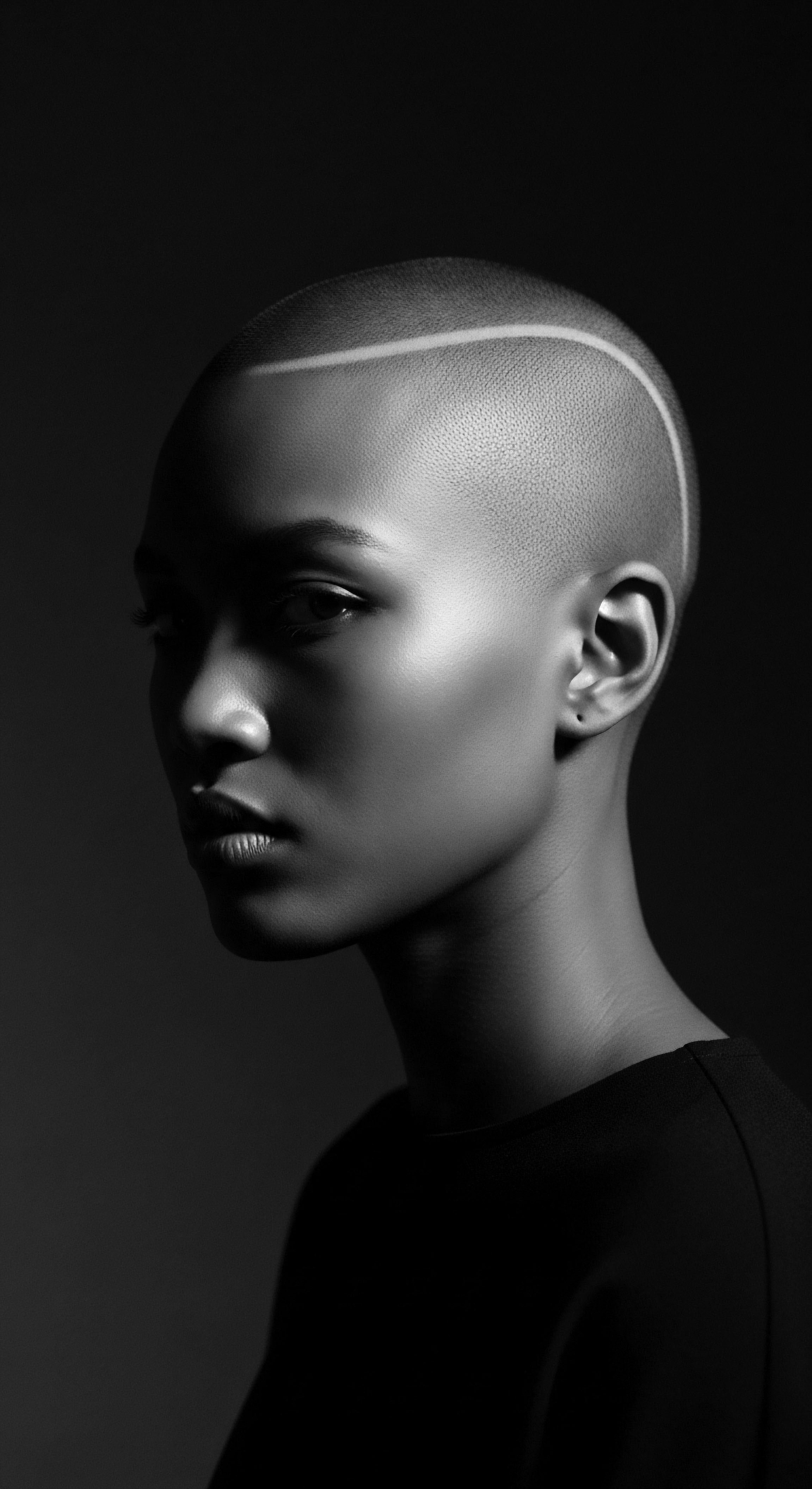
Cellular Architecture and Molecular Regulation
At its most fundamental level, the hair follicle is an epithelial-mesenchymal organ, meaning its development and function depend upon reciprocal interactions between epithelial cells (which form the hair shaft and surrounding sheaths) and mesenchymal cells (found in the dermal papilla). The Dermal Papilla, a cluster of specialized mesenchymal cells at the follicle’s base, acts as the command center, signaling to the overlying Hair Matrix Cells, which are rapidly proliferating epithelial cells. These matrix cells undergo terminal differentiation to produce the various layers of the hair shaft ❉ the innermost Medulla (not present in all hair types), the robust Cortex (responsible for hair’s strength and color), and the protective outermost Cuticle.
The intricate dance of cell division, migration, and differentiation within the hair follicle is orchestrated by a symphony of molecular signals. Growth factors, hormones, and signaling pathways, such as Wnt/β-catenin, Hedgehog, and Notch pathways, precisely regulate the hair growth cycle. Disturbances in these pathways can lead to various hair disorders, including alopecia. The hair follicle also possesses a remarkable stem cell niche, primarily located in the Bulge region of the outer root sheath.
These stem cells are crucial for follicular regeneration during each new hair cycle and contribute to epidermal wound healing. The cyclical nature of hair growth—anagen (growth), catagen (regression), telogen (rest), and exogen (shedding)—is a highly coordinated biological process, with each follicle operating independently.
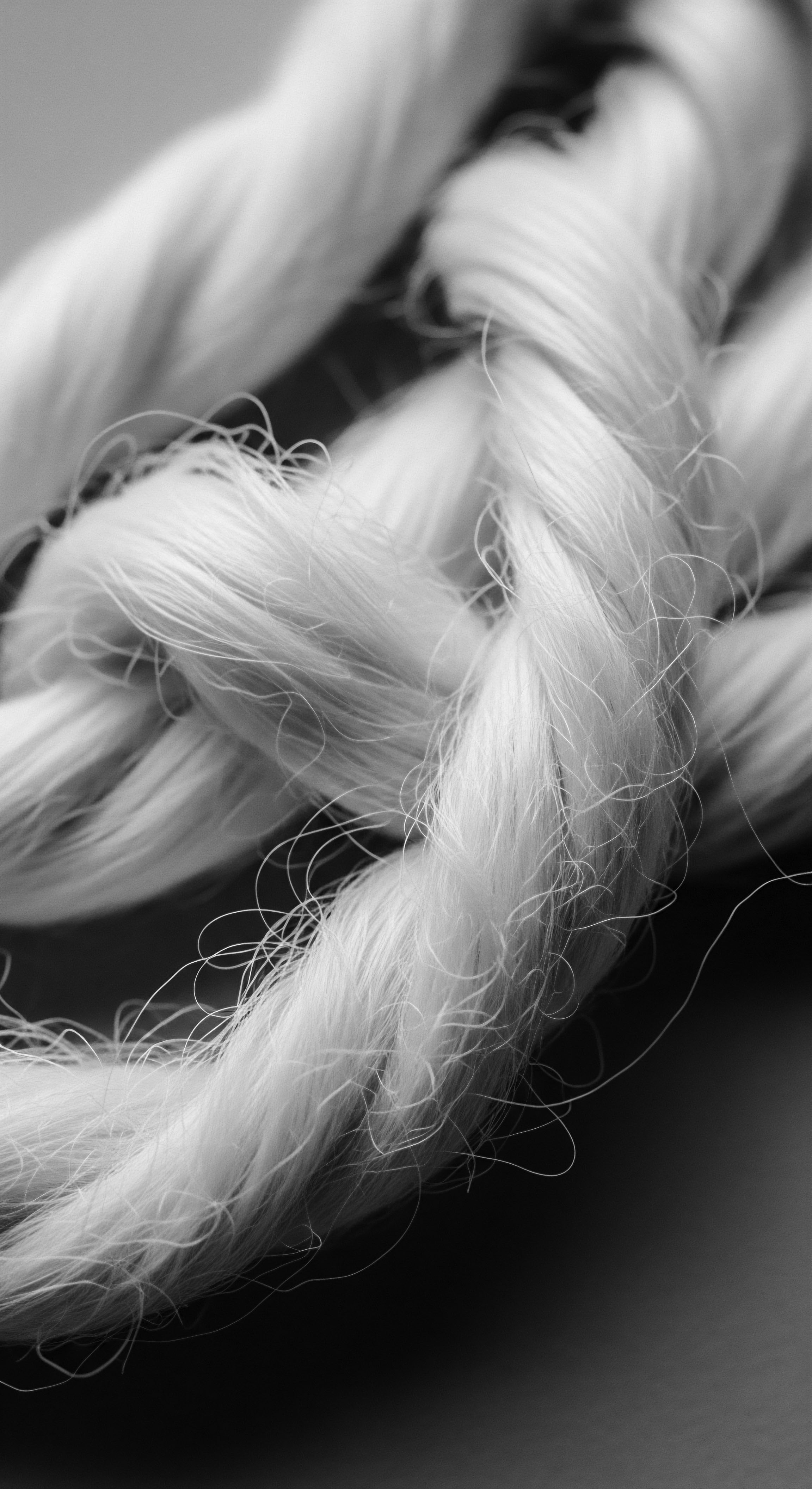
The Genomic Tapestry of Textured Hair
The remarkable diversity in human hair texture, particularly the distinct coiling patterns of Afro-textured hair, is fundamentally rooted in specific genetic variations that influence hair follicle morphology and the arrangement of keratin proteins. While the embryologic development of hair follicles is broadly similar across all races, critical distinctions emerge in the mature follicle’s structure and the resulting hair shaft.
Afro-textured hair follicles are characterized by an elliptical cross-section and a pronounced curvature, often exhibiting an asymmetrical S-shape or a retro-curvature at the hair bulb. This unique follicular geometry causes the hair shaft to grow with inherent twists and turns, creating its characteristic coils and kinks. In contrast, Asian hair typically grows from a round follicle, resulting in straight hair, while Caucasian hair follicles vary from round to oval.
The degree of hair curl is influenced by multiple genes, representing an additive trait where the interplay of various genetic markers determines the specific curl pattern. Genes such as Trichohyalin (TCHH) are particularly significant, as they contribute to the cross-linking of keratin filaments into rigid structures, providing mechanical strength to the hair follicle and shaft, and presenting polymorphic variations associated with hair curl.
These structural distinctions have direct implications for the physical properties of textured hair. Afro-textured hair often exhibits a lower tensile strength and decreased moisture content compared to other hair types, rendering it more susceptible to breakage, particularly at the points of curvature. The tight coiling also impedes the natural distribution of sebum from the scalp along the hair shaft, contributing to its tendency for dryness. These biological realities necessitate specific care practices that prioritize moisture retention, gentle handling, and protective styling, echoing ancestral wisdom.

The Ancestral Wisdom of Preservation ❉ A Chebe Case Study
The scientific understanding of Hair Follicle Biology, particularly its vulnerabilities and needs in textured hair, finds a compelling echo in ancestral practices. For centuries, communities across the African continent have cultivated sophisticated hair care rituals, often without formal scientific terminology, yet with an intuitive grasp of hair health that modern research is now beginning to affirm. A poignant example is the use of Chebe Powder by the Basara women of Chad. This traditional practice, deeply rooted in cultural heritage, powerfully illuminates the connection between ancestral knowledge and Hair Follicle Biology’s connection to textured hair.
The Basara women are renowned for their remarkable hair length, which they attribute to the consistent application of Chebe powder. This powder, a mixture of various natural ingredients including Lavender Crotons (Croton zambesicus), Mahlab Seeds, Misic Stone, and Clove, is traditionally mixed with oils and applied to the hair strands, avoiding the scalp. The practice centers on reducing breakage and retaining length, rather than directly stimulating follicular growth.
While Chebe powder is applied to the hair shaft and not directly to the follicle, its efficacy is a testament to a holistic approach to hair health that indirectly benefits the hair follicle. By coating the hair strands, Chebe powder helps to ❉
- Minimize Mechanical Stress ❉ The powder-oil mixture reduces friction between hair strands and from external elements, significantly decreasing breakage caused by daily manipulation, combing, and environmental exposure. This preservation of existing hair length allows the follicle’s continuous growth to accumulate, resulting in longer hair.
- Retain Moisture ❉ The emollient properties of the oils used with Chebe powder help to seal moisture into the hair shaft, addressing the inherent dryness often associated with tightly coiled hair. Hydrated hair is more elastic and less prone to breakage, thus preserving the hair fiber produced by the follicle.
- Protect the Hair Shaft ❉ The coating acts as a protective barrier, shielding the hair from environmental aggressors and physical damage. This external protection means the hair follicle’s output remains intact for longer periods, contributing to overall hair vitality.
The Basara women’s centuries-old practice demonstrates a profound empirical understanding of hair fiber preservation, which directly impacts the perceived health and length of hair produced by the follicles. It underscores that while modern science dissects the cellular mechanisms of the follicle, ancestral practices often developed comprehensive strategies that addressed the entire hair ecosystem, from root to tip, to achieve desired outcomes. This case study challenges the notion that scientific understanding is solely a product of modern laboratories, instead highlighting the enduring value of intergenerational observation and applied wisdom.
The traditional use of Chebe powder by Basara women, while not a direct follicular treatment, exemplifies ancestral knowledge in preserving hair length by minimizing breakage, thereby allowing the hair follicle’s continuous output to flourish.
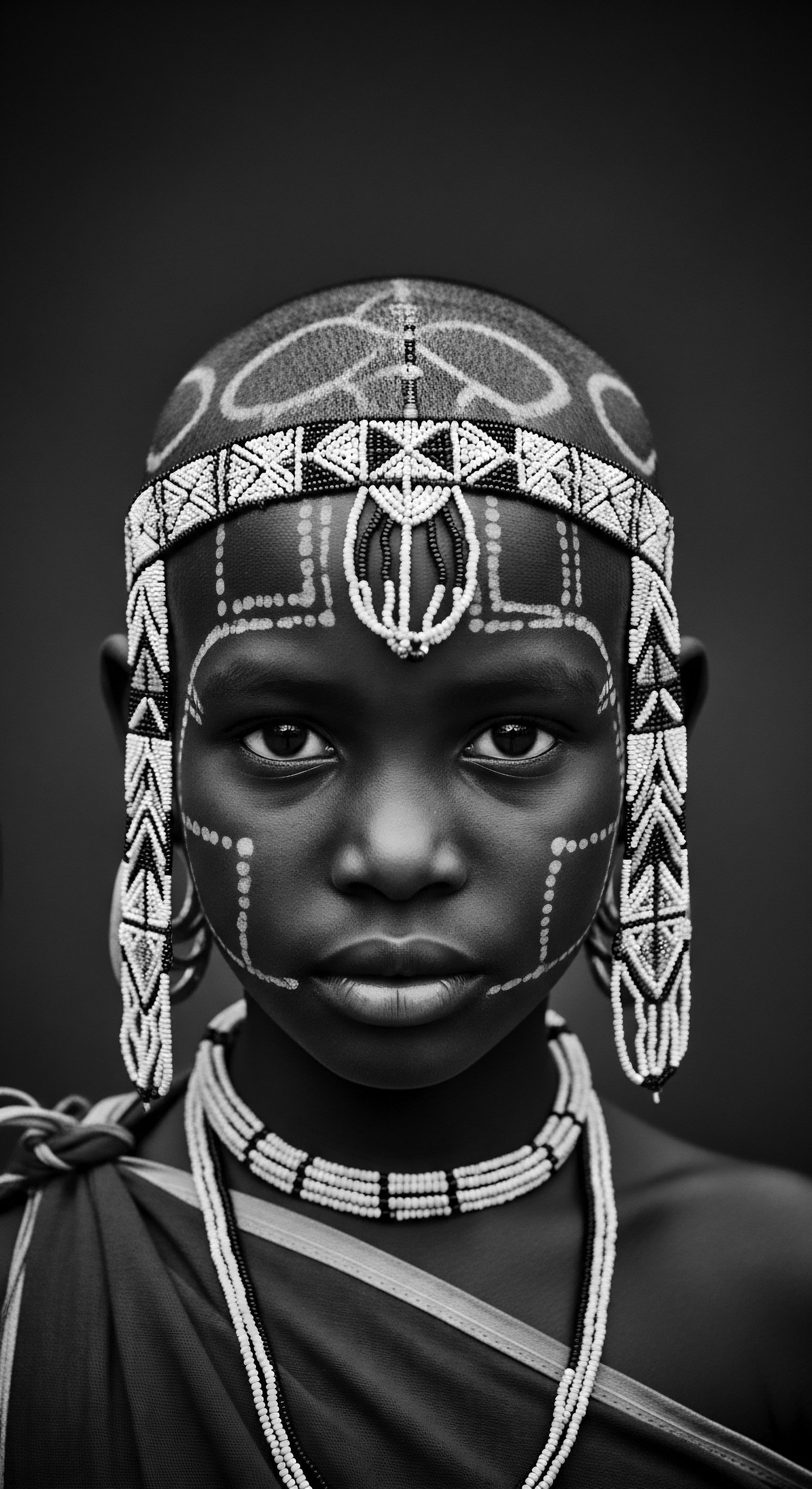
The Sociocultural Semiotics of Follicular Difference
The Hair Follicle Biology, particularly as it pertains to textured hair, carries a weighty sociocultural significance that extends far beyond its biological parameters. Historically, and regrettably, the inherent biological differences in hair follicle morphology across racial groups have been weaponized, contributing to systems of oppression and discrimination.
In pre-colonial African societies, hair was a powerful medium of communication, signifying social status, age, marital status, tribal affiliation, wealth, and spiritual beliefs. Intricate braiding patterns and elaborate styles, often requiring many hours of communal effort, served as visual languages, reinforcing community bonds and identity. Hair was considered sacred, a conduit for spiritual energy and a link to ancestors.
The advent of the transatlantic slave trade and subsequent colonialism brutally disrupted these rich traditions. Enslaved Africans were often forcibly shorn of their hair upon arrival in the Americas, a deliberate act designed to strip them of their identity, culture, and connection to their heritage. The tightly coiled hair, a natural expression of their Hair Follicle Biology, was then pathologized and deemed “unprofessional,” “unclean,” or “bad” within Eurocentric beauty standards. This cultural violence perpetuated a deep-seated inferiority complex, leading many Black individuals to chemically alter their hair texture or conceal it to conform to dominant societal norms for survival and acceptance.
The legacy of this historical subjugation continues to affect perceptions of textured hair today. Studies reveal that Black women with natural hairstyles often face workplace discrimination, being perceived as less professional. This underscores the ongoing struggle to reclaim and celebrate the inherent beauty and biological distinctiveness of textured hair. The contemporary natural hair movement, a powerful assertion of Black identity and pride, directly challenges these entrenched biases, advocating for the acceptance and celebration of all hair textures as a fundamental aspect of self-acceptance and cultural heritage.
The table below provides a comparative view of traditional African hair care ingredients, often utilized with an implicit understanding of hair follicle health, and their modern scientific associations.
| Ancestral Ingredient/Practice Shea Butter (Vitellaria paradoxa) |
| Traditional Use/Cultural Context Widely used across West Africa for moisturizing hair and scalp, protecting from sun and dryness. |
| Modern Hair Follicle Biology Connection Rich in fatty acids and vitamins A & E, it seals moisture, reduces breakage, and supports a healthy scalp environment for optimal follicle function. |
| Ancestral Ingredient/Practice African Black Soap |
| Traditional Use/Cultural Context From West Africa, used for gentle cleansing of hair and scalp. |
| Modern Hair Follicle Biology Connection Contains natural ash from plantains and cocoa pods, offering vitamins A & E, and minerals that nourish the scalp without stripping natural oils, aiding follicular health. |
| Ancestral Ingredient/Practice Rooibos Tea (Aspalathus linearis) |
| Traditional Use/Cultural Context From South Africa, consumed as a tea; applied topically for hair growth and scalp health. |
| Modern Hair Follicle Biology Connection High in antioxidants, zinc, and copper, it combats oxidative stress on the scalp, improves circulation to follicles, and can reduce hair fall. |
| Ancestral Ingredient/Practice Marula Oil (Sclerocarya birrea) |
| Traditional Use/Cultural Context Traditional oil from Southern Africa, used for skin and hair nourishment. |
| Modern Hair Follicle Biology Connection Abundant in vitamins and fatty acids (omega-3, -6, -9), it moisturizes and strengthens hair, protecting strands from damage, thus preserving the follicle's output. |
| Ancestral Ingredient/Practice Rhassoul Clay |
| Traditional Use/Cultural Context From Morocco, used as a cleansing mud wash for hair and scalp. |
| Modern Hair Follicle Biology Connection Removes impurities and product buildup without stripping natural oils, maintaining a balanced scalp pH and fostering a clean environment for follicles. |
| Ancestral Ingredient/Practice These traditional applications demonstrate a timeless understanding of hair vitality, offering compelling evidence of how ancestral practices inherently supported the optimal conditions for Hair Follicle Biology within textured hair communities. |
The ongoing exploration of Hair Follicle Biology in textured hair thus becomes a critical act of decolonization, a reclamation of inherent beauty and a validation of ancestral knowledge. It is a scientific pursuit that must be deeply informed by cultural context, recognizing that the biological realities of textured hair have been shaped not only by genetics but also by centuries of social narratives and resilience. The nuances of its structure and function call for an approach to care that honors its distinctiveness, drawing from both modern scientific insights and the profound wisdom of heritage.
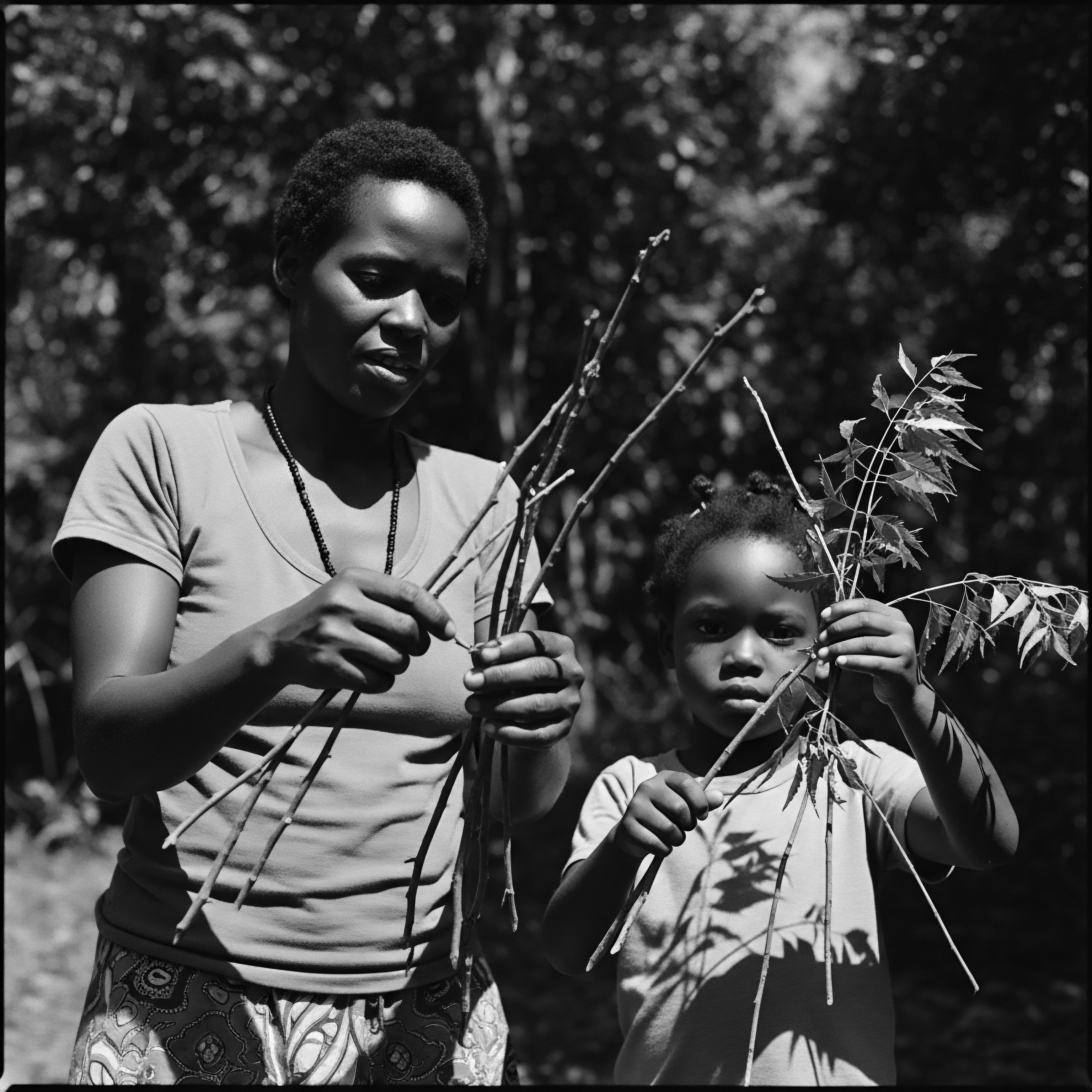
Reflection on the Heritage of Hair Follicle Biology
As we conclude our exploration of Hair Follicle Biology, particularly through the lens of textured hair heritage, a profound realization emerges ❉ the scientific understanding of this minuscule organ is inextricably linked to the grand narrative of human history, cultural identity, and enduring resilience. The follicle, often unseen beneath the surface, stands as a silent witness to generations of stories, struggles, and triumphs etched into the very strands it produces. It is more than a biological structure; it is a repository of ancestral memory, a living archive of our collective past.
The journey from elemental biological understanding to its intricate cultural significance reveals a continuous thread, a ‘Soul of a Strand’ ethos that pulses with vitality. From the ancient hearths where hair was meticulously adorned to convey social standing and spiritual connection, to the contemporary spaces where textured hair is reclaimed as a powerful statement of self-acceptance and pride, the hair follicle has been at the core. Its unique shape and function in textured hair, once misconstrued or marginalized, are now being celebrated as markers of extraordinary biological diversity and beauty.
Our appreciation for Hair Follicle Biology deepens when we acknowledge the ancestral ingenuity that instinctively cared for textured hair, long before scientific instruments could dissect its complexities. The hands that braided, the herbs that nourished, the oils that sealed—these practices were not merely cosmetic. They were acts of profound care, often intuitively aligned with the biological needs of the hair follicle, fostering an environment where resilient, vibrant hair could flourish. This historical dialogue between traditional wisdom and modern science offers a richer, more holistic interpretation of hair health, one that honors the past while illuminating pathways for the future.
The ongoing narrative of textured hair is one of reclamation, of shedding imposed narratives, and of embracing the biological truths that affirm its inherent strength and beauty. The hair follicle, in its silent diligence, continues to produce strands that defy adversity, adapting and evolving, much like the communities they crown. Understanding its biology is not merely about science; it is about recognizing the deep connection to our roots, the profound significance of our heritage, and the boundless possibilities that arise when we truly honor the ‘Soul of a Strand.’ This enduring legacy reminds us that true wellness begins at the source, both within our bodies and within the collective wisdom of our ancestors.
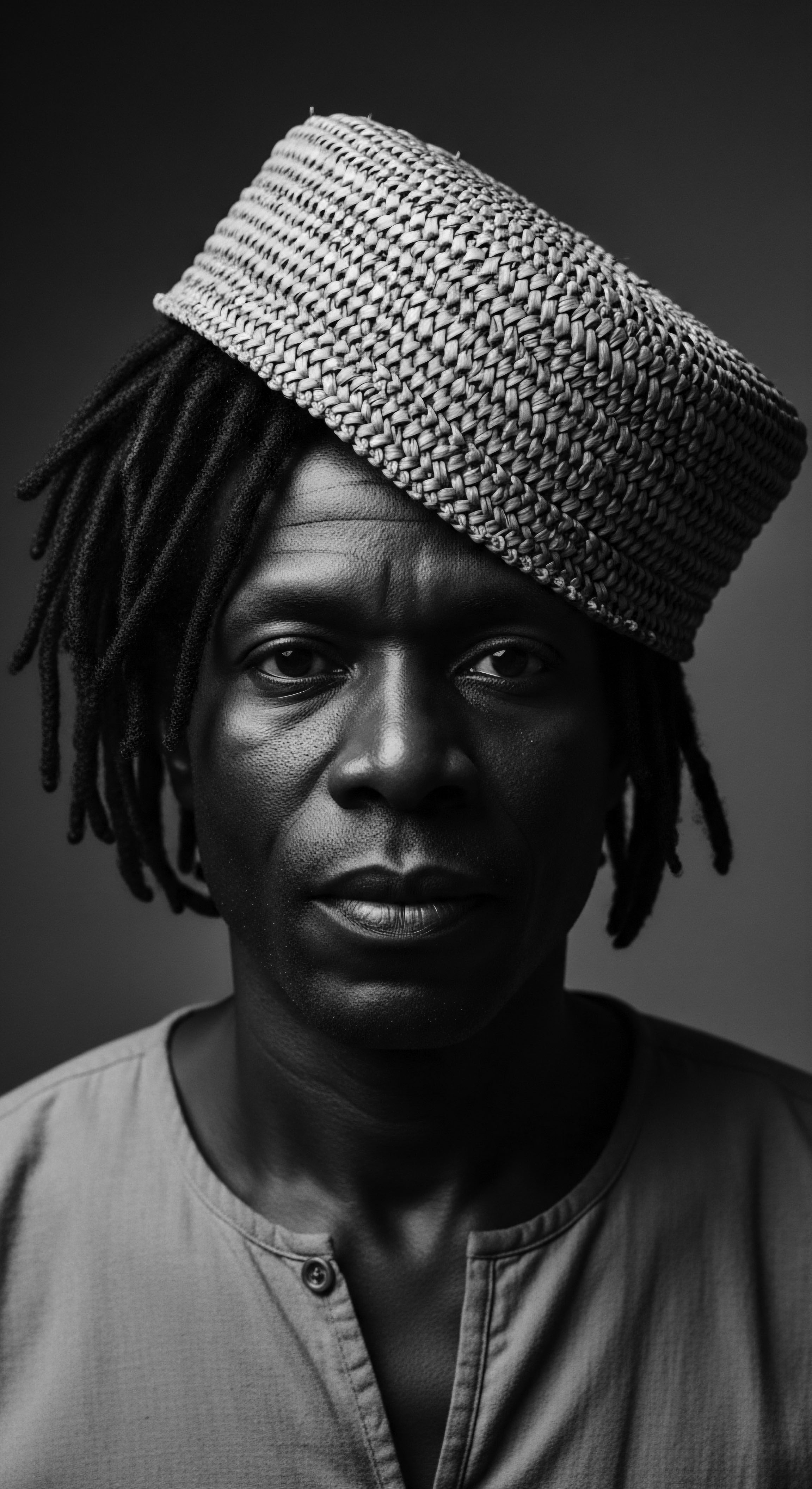
References
- Banks, I. (2000). Hair Matters ❉ Beauty, Power, and Black Women’s Consciousness. New York University Press.
- Essel, O. Q. (2020). Conflicting Tensions in Decolonising Proscribed Afrocentric Hair Beauty Culture Standards in Ghanaian Senior High Schools. Journal of Education and Culture, 10(1), 26-40.
- Fongnzossie, E. & Ndhlala, A. R. (2018). Ethnobotanical survey of medicinal plants used by Choa Arab and Kotoka ethnic tribes of Kousseri (Northern Cameroon) for human healthcare. Journal of Ethnopharmacology, 224, 18-30.
- Gordon, M. (2017). The Hair Story ❉ Untangling the Roots of Black Hair in America. St. Martin’s Press.
- Harrison, W. M. (2003). The Hair of the Dog ❉ A Natural History of Hair and Its Impact on Human Culture. HarperCollins.
- Jablonski, N. G. (2012). Living Color ❉ The Biological and Cultural Evolution of Skin and Hair Color. University of California Press.
- Khumalo, N. P. & Gumedze, F. (2019). Hair Loss Disorders in African Women ❉ A Clinical and Epidemiological Approach. Springer.
- Loussouarn, G. (2016). African hair ❉ an update. Journal of Cosmetic Dermatology, 15(4), 304-309.
- Okoro, N. (2021). Black Hair ❉ A Cultural and Historical Journey. Thames & Hudson.
- Robbins, C. R. (2012). Chemical and Physical Behavior of Human Hair. Springer.
- Sperling, L. C. (2006). An Atlas of Hair Pathology with Clinical Correlations. Informa Healthcare.
- Tharps, L. & Byrd, A. (2001). Hair Story ❉ Untangling the Roots of Black Hair in America. St. Martin’s Press.
- Tobin, D. J. (2019). Hair in Toxicology ❉ An Important Bio-Matrix. CRC Press.
- van der Horst, S. (2017). Hair Politics ❉ Beauty, Race, and the Politics of Identity. University of California Press.
- Wong, R. C. & Grieshaber, S. (2019). Dermatology of Pigmented Skin. Springer.
